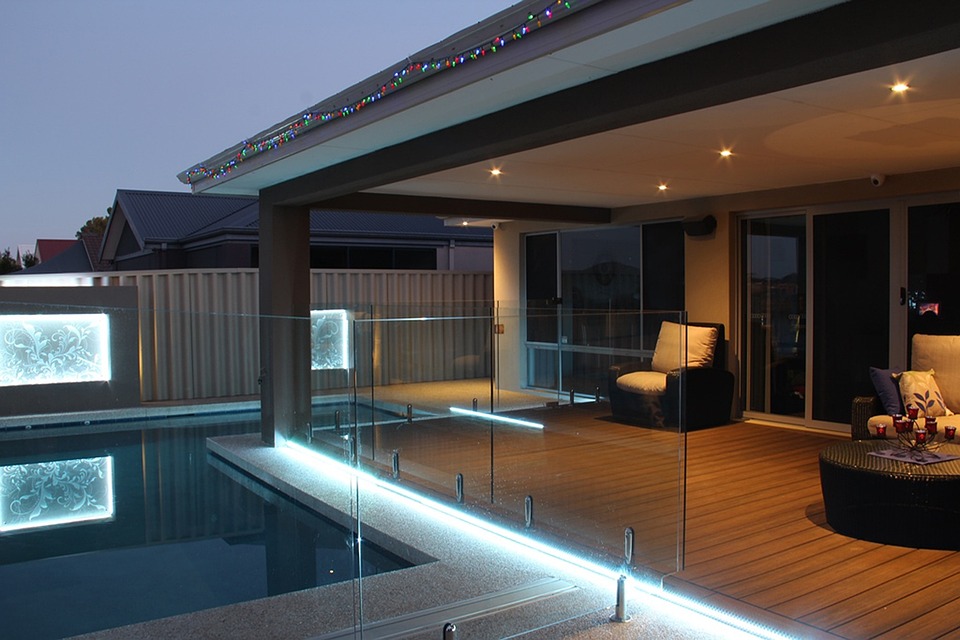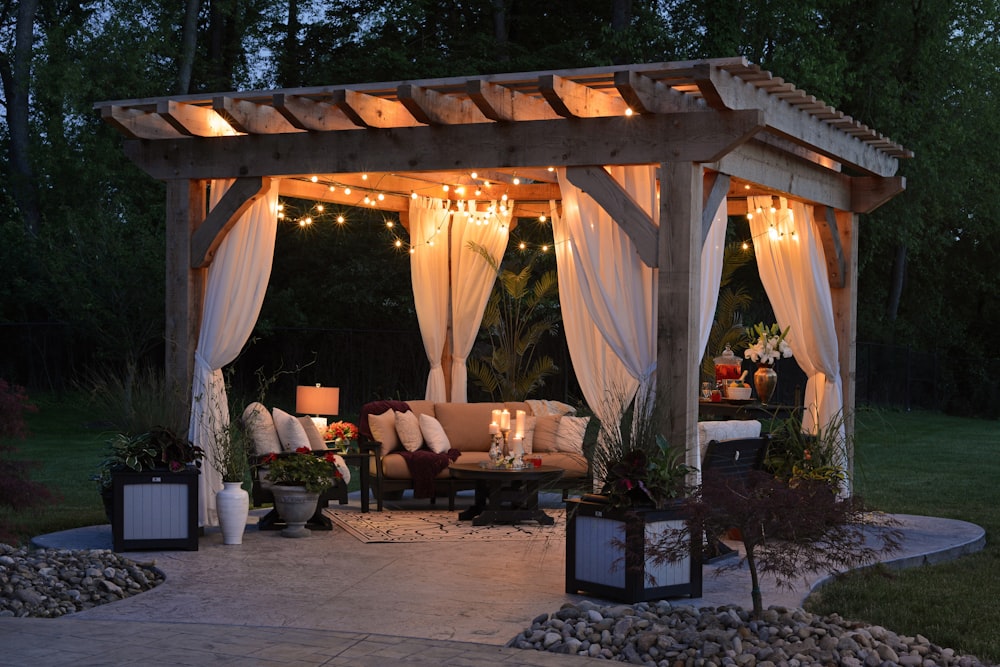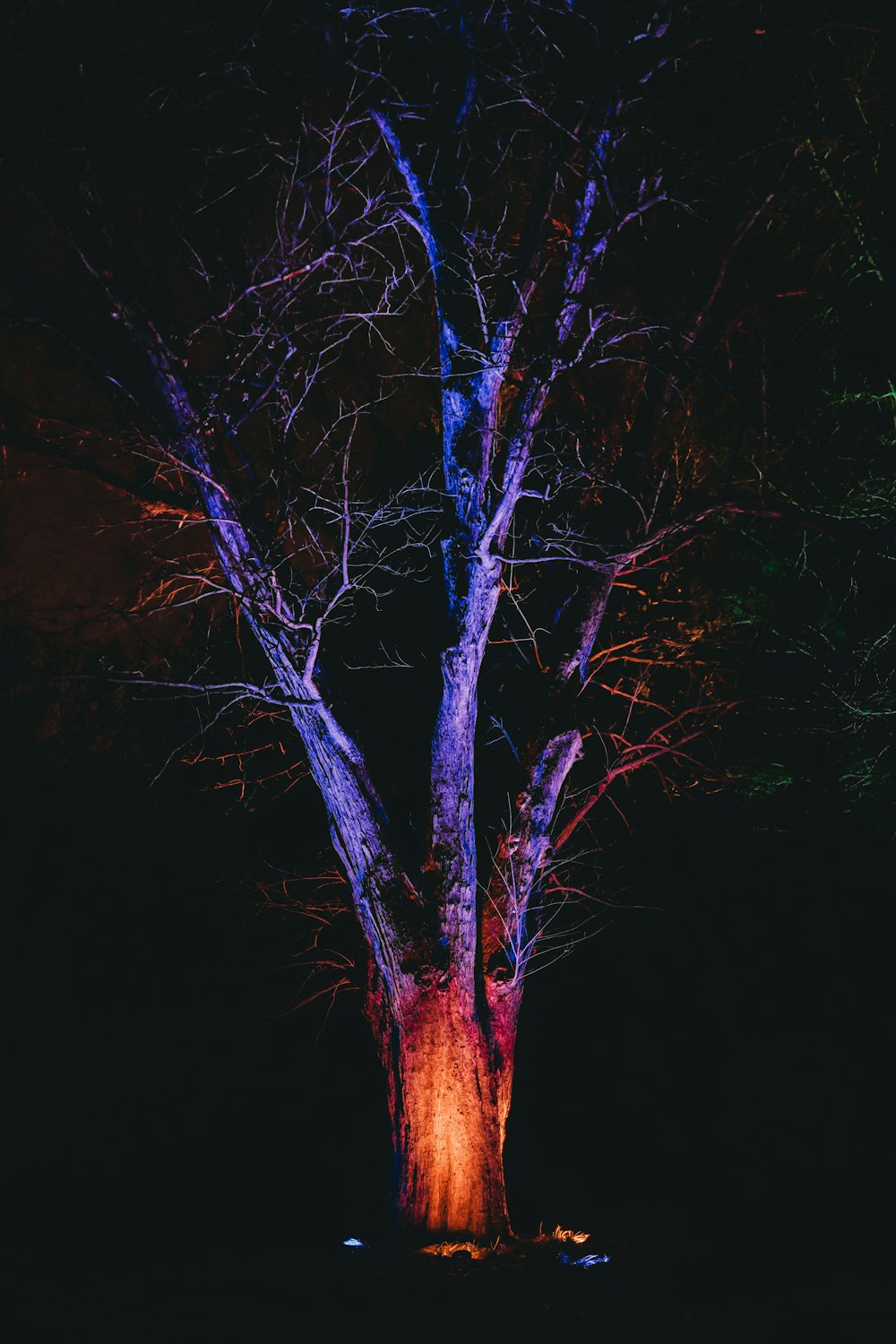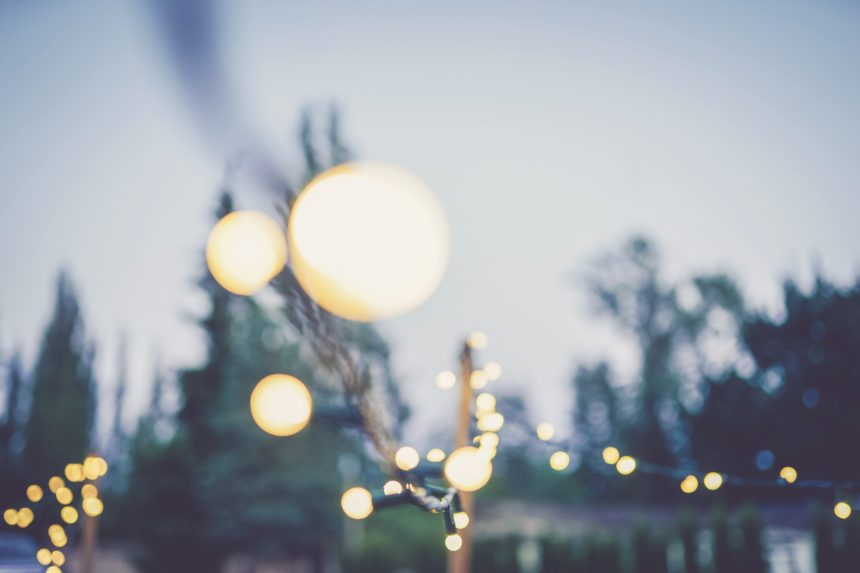Why Get Landscape Lighting?
When most people think of landscape design, their first thoughts likely go to plants, trees, lawns, decks, and patios. However, a very important piece of the puzzle that often gets overlooked is exterior lighting design, which can offer both functional and visually pleasing elements to your home.
Exterior landscape lighting can go from as small as little solar lights that line your paths all the way up to hardwired and mounted flood lights and uplighting. Briefly summarized below are a few benefits to putting some time and thought into your landscape lighting design.

Looks
A good set of lights can really enhance the visual appeal of your home during the dusk and night time hours. They can draw attention to features of your yard such as ornamental plants or structures like fire pits, patios, and decks. They can also make the architecture of your home pop out and look striking, increasing the curb appeal of your home nicely. A little bit of light can go a very long way!
Function
With the right kind of lighting, your back yard’s usefulness can extend past only daylight hours. Vibrant, warm flood lights attached to your house can shed light on common areas so that you can relax with friends and family and still have visibility. If you have a deck, there are all manner of deck post lights and rail lights and so on that can really set the mood for outdoor dinner and conversation. With the advances and availability of LED technology, there is pretty much a light for every kind of outdoor use imaginable.
Security & Safety
An added bonus of exterior lighting is providing visibility to sensitive areas such as ground-floor windows and entries. A well-lit exterior has less places to hide for criminals and other nefarious intent.
Hand-in-hand with security is the safety that lighting can provide. Tread-lighting for stairs to your deck, path lights to keep people from tripping, and so on can keep visibility high enough to keep you, your family, and your guests safe all night.
How Far Apart Should Landscape Lights Be Placed?

If you’re up to the task of doing your own lighting, you’ll want to know some basic tips on placement. Generally speaking, for paths, you’ll want to keep most lights around five to seven feet apart. This keeps your path light without being too bright or cluttered. Beyond that, there are no real hard and fast rules of spacing for lights. Because there are so many varied options for fixtures these days, you can use clusters of certain lights to create vivid effects or colors, or you can use sparse, bright flood lighting to create splashes and accents across your landscape.
What is the Best Wattage for Landscape Lighting?
As far as lighting goes for outdoor areas, the lower the wattage you can get away with the better. In most scenarios, too bright of lighting can be oppressive and uncomfortable. In opposite, under-lighting can create unsafe and uninteresting environments. The “sweet spot” for best wattage for outdoor lights is generally 40 watts (incandescent) and below. 40 watts is great for lighting pathways and main areas, and anything lower is great for accent lighting and other ambient effect.
Anything over 40 watts would be considered flood lighting and should be used sparingly in an outdoor environment. Generally brighter lights are used for highlighting and uplighting, which is explained further below.
NOTE: These wattage amounts are approximations for incandescent lighting. It is recommended to use low-wattage LED lights for outdoor lighting. 3-5 watts LED = approx. 40 Watts incandescent, or 300-500 Lumens.
Where Should House Uplighting Be Placed?

Uplighting your house is a great idea to add curb appeal and to really showcase your beautiful home! Specifically, it can offer a few different kinds of effects depending on your needs.
Primarily, spotlighting can accentuate specific aspects of your home and yard. If you want to highlight something specific, place a spotlight at it’s base and point it up to create a stark, impressive look to whatever you shine the light on.
Uplights can also create shadows that can be cast across flat surfaces such as garden walls or otherwise uninteresting portions of your architecture. Trees, plants, and other structures (such as lattice) can be lit creatively to cast fun and interesting shadows!
If you have a lot of “blank canvas” like surfaces, you can also use uplighting to cast color washes across walls and other surfaces of your home to create ambience.
Finally, a little trade secret, is backlighting, which is essentially the reverse of spotlighting. Backlights are used to highlight things in a dramatic and effective way and can really make the components of your yard really pop out! (Think photo ops!)
Are Landscape Lights Worth It?

Of course, any consideration about changes to your home and yard cannot exclude one of finance. Landscape lighting is something that is very easy to install and maintain. As stated above, advances in lighting and LED technology has allowed designers to create in-line solutions that are affordable and will last nearly a lifetime. While it may seem easier to skimp on hardware and go the cheaper route or go all solar, these fixtures generally don’t last long and you will be replacing them sooner than later. Recommended are good, reliable LED brands such as FX Luminaire and Kichler.
With the help of a professional designer, you will have access to the best styles and fixtures that will illuminate your home, your landscape, and any other part of your property you wish to showcase. Ultimately, a creative and beautiful exterior lighting design will undoubtedly add value to your property, both financially, and functionally.
If you’d like to explore you lighting options, as well as every other facet of your landscape design needs, consider using our digital landscape design services! Learn more at our homeowner’s page!

